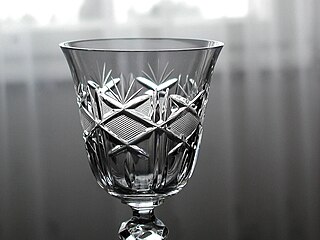William Russell may refer to:
David Batty is an English former professional footballer who played as a defensive midfielder.
Batty is a surname and is most commonly found in Yorkshire, northern England. It is derived from Batte, a medieval form of the given name Bartholomew. Notable people with the surname include:
Wrightson is a surname, and may refer to

Cusworth Hall is an 18th-century Grade I listed country house in Cusworth, near Doncaster, South Yorkshire in the north of England. Set in the landscaped parklands of Cusworth Park, Cusworth Hall is a good example of a Georgian country house. It is now a country house museum.
Hattie or Hatty is traditionally an English feminine nickname for the name Harriet, long used, however, independently.

William Battie was an English physician who published in 1758 the first lengthy book on the treatment of mental illness, A Treatise on Madness, and by extending methods of treatment to the poor as well as the affluent, helped raise psychiatry to a respectable specialty. He was President of the Royal College of Physicians in 1764.

Capodimonte porcelain is porcelain created by the Capodimonte porcelain manufactory, which operated in Naples, Italy, between 1743 and 1759. Capodimonte is the most outstanding factory for early Italian porcelain, the Doccia porcelain of Florence being the other main Italian factory. Capodimonte is most famous for its moulded figurines.

William Billingsley (1758–1828) was an influential painter of porcelain in several English porcelain factories, who also developed his own recipe for soft-paste porcelain, which produced beautiful results but a very high rate of failure in firing. He is a leading name associated with the English Romantic style of paintings of groups of flowers on porcelain that is sometimes called "naturalistic" by older sources, although that may not seem its main characteristic today.

Engraved glass is a type of decorated glass that involves shallowly engraving the surface of a glass object, either by holding it against a rotating wheel, or manipulating a "diamond point" in the style of an engraving burin. It is a subgroup of glass art, which refers to all artistic glass, much of it made by "hot" techniques such as moulding and blowing melting glass, and with other "cold" techniques such as glass etching which uses acidic, caustic, or abrasive substances to achieve artistic effects, and cut glass, which is cut with an abrasive wheel, but more deeply than in engraved glass, where the engraving normally only cuts deeply enough into the surface to leave a mark. Usually the engraved surface is left "frosted" so a difference is visible, while in cut glass the cut surface is polished to restore transparency. Some pieces may combine two or more techniques.

Francis de Witt Batty OBE was the 7th Anglican Bishop of Newcastle in Australia from 1931 until his retirement in 1958.
William, Bill or Billy Austin may refer to:
Langley is a habitational surname from any of the numerous places named with Old English Lang + lēah

William Batty (1801–1868) was an equestrian performer, circus proprietor, and longtime operator of Astley's Amphitheatre in London. Batty was one of the most successful circus proprietors in Victorian England and helped launch the careers of a number of leading Victorian circus personalities, such as Pablo Fanque, the versatile performer and later circus proprietor, and W.F. Wallett, one of the most celebrated clowns of the era. Also, while in operation for only two years, Batty's most lasting legacy is probably Batty's Grand National Hippodrome, also known as Batty's Hippodrome, an open-air amphitheatre he erected in 1851 in Kensington Gardens, London, to attract audiences from the Crystal Palace Exhibition nearby.
Robert Batty may refer to:
William Wrightson, of Cusworth, Yorkshire, was a British landowner and politician who sat in the House of Commons from 1784 to 1790.
William Battie-Wrightson was a British landowner and Whig politician.

Vezzi porcelain is porcelain made by the Vezzi porcelain factory in Venice, Italy, established in 1720 by the Vezzi family. It was the first porcelain factory in Italy, after the experimental Medici porcelain of the 16th century. It operated only until 1727, so surviving pieces are few, probably fewer than 200. It made "true" hard-paste porcelain, and was only the third factory in Europe to do so, hiring technicians from Meissen porcelain and Vienna porcelain, the first two makers.

Cut glass or cut-glass is a technique and a style of decorating glass. For some time the style has often been produced by other techniques such as the use of moulding, but the original technique of cutting glass on an abrasive wheel is still used in luxury products. On glassware vessels, the style typically consists of furrowed faces at angles to each other in complicated patterns, while for lighting fixtures, the style consists of flat or curved facets on small hanging pieces, often all over. Historically, cut glass was shaped using "coldwork" techniques of grinding or drilling, applied as a secondary stage to a piece of glass made by conventional processes such as glassblowing.
William Wrightson may refer to:
This page is based on this
Wikipedia article Text is available under the
CC BY-SA 4.0 license; additional terms may apply.
Images, videos and audio are available under their respective licenses.








